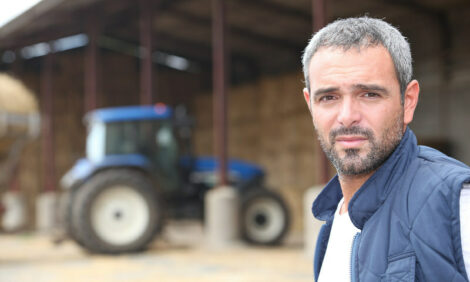



Number 1 biosecurity lesson: never stop improving
The first lesson of biosecurity, according to Andrea Pitkin, DVM, health assurance veterinarian for PIC, is to learn, modify and adapt because new threats can surface at any time.“We need to understand that biosecurity is dynamic,” she said. “We didn’t have porcine epidemic diarrhea virus (PEDV) or Seneca cases 10 years ago.”
Genetic suppliers have to be particularly diligent about herd health, since producers want to feel confident in the health status of breeding stock they receive.
During the 2017/2018 winter, the US pig industry faced many health breaks and PIC also experienced challenges with porcine reproductive respiratory syndrome (PRRS), PEDV and Mycoplasma pneumonia in some of its farms. While PIC identified infected animals early and took actions to mitigate the impact, the company decided to do a thorough review of its biosecurity standards and biosecurity culture.
Herd health threats and biosecurity have a way of keeping even the most diligent veterinarians and producers humble. While PIC has detailed protocols, technology and personnel in place to protect its swine herd, when it comes to biosecurity there is no 100% guarantee.
“To err is human; it’s not a matter of if, but when you’re going to have biosecurity infractions on your farm,” Pitkin told Pig Health Today. “The important thing is to learn from those lessons and take action.”
Take a step back
The first task for PIC and Pitkin was to step back and identify why sites were facing a health challenge; where were the gaps?
It’s not surprising to find that there was no single answer. In some cases, it was a result of changes to the external environment, such as pigs moving close to PIC sites. In other instances, it was non-compliance with transport protocols or the fumigation process or how people entered the farm. PIC’s people were well-trained, but a track record of years without health challenges had caused complacency in some instances.
So, Pitkin set her sights on getting people to be more accepting of and conscientious about following biosecurity measures. She identified 10 factors that help build and secure a biosecurity culture:
- Set the standard - Define desired values and behaviours.
- Align culture with strategy and processes.
- Connect culture and accountability.
- Have visible proponents.
- Define non-negotiables.
- Align your culture with your brand.
- Measure it.
- Don’t rush it.
- Invest now.
- Be bold and lead.
Building a mindset
To create a biosecurity mindset, everyone must first understand the expectations — what are the priorities and what are the non-negotiables. PIC had various standard operating procedures (SOPs) in place, but to advance the company’s biosecurity culture they fleshed out the details and developed what they call Bioshield Standards, which outline nine categories and divide areas further into sub-categories.
What PIC found during this process was that some areas were lacking. “We didn’t have anything on air filtration or processes for manure management,” Pitkin noted.
Key to developing the standards was to organize a team of veterinarians, who could address the science, and production specialists, who could provide practical perspectives of what will or won’t work in the barns.
Because biosecurity is meant to make it “bio-inconvenient” for pathogens to reach the pigs, it tends to make it inconvenient for people to implement the protocols as well. “I would challenge you to go back to your farm and look at your SOPs to determine, not only if they make sense, but whether people can follow them,” she challenged. “Are they feasible to implement?”
Pitkin also encourages producers and veterinarians to change the conversation, which tends to highlight the challenges, expense and extra time associated with biosecurity. For example, change:
- Inconvenient to disease prevention
- Expensive to investment
- Time consuming to making an extra effort
“Show your appreciation,” she emphasized. “From what we’ve seen, putting a value on the action has made a big difference. This may sound like semantics, but it creates a very different conversation.”
Train and monitor
Thinking back to her student days and veterinary mentors, Pitkin relayed that it’s critical to teach workers “why” then “how.” First, address why the biosecurity protocol is important and the impact on the animal, herd or company if it is not carried through, followed by how to perform the task effectively.
“Personnel have to know the consequences - good and bad - of their actions,” she said. “And, it will help you get better compliance from your personnel.”
Too often, biosecurity training is treated as a one-off, with some occasional retraining. But continual training, retraining and evaluation need to be part of the everyday package.
PIC has developed a series of 10 videos which focus on different aspects of biosecurity, and all are presented in English, Spanish and Portuguese. Corresponding posters posted in facilities use images and messages from the videos to emphasize consistent and familiar concepts.
Once the biosecurity standards and training program are created, the next step is monitoring — to see if it’s working. “This is probably the hardest part, because you don’t know the breaks you have prevented,” Pitkin noted.
One of the ways PIC monitors the process is to have its swine veterinarians, production supervisors or technical service visitors fill out 14 biosecurity questions as part of their herd visit reports. This includes such questions as “Did the farm have a proper boot bench? Were mortalities being handled properly?” Farm personnel have 14 days to correct a problem, unless it requires significant time and money to address.
Other monitoring includes a scoring system to measure feed-milling, transport and truck-washing compliance.
There also is a self-reporting program called SCAN, which stands for See, Call, Act, eNhance. Any PIC personnel can call, email or report an issue through a designated website. Emails are the most common reporting method, and it’s worth noting that those are not anonymous. “That doesn’t seem to be a concern,” Pitkin said. “But we’re not using the reports as a penalty; we’re trying to collect information and find solutions.”
In 2018, 414 SCAN observations were reported across six PIC-related farms. Pitkin pointed out that the issues varied from month to month and she found no significant trends, but it did offer tips on areas to target.
Another aspect that tends to get overlooked is to prepare employees for the unexpected. More specifically, provide guidance on how to get out of a compromised position, such as the corrective action they can take to minimize the impact and get back on track in a biosecure manner. That’s another time when understanding the “why” of a biosecurity standard is beneficial.
Finally, Pitkin emphasised that high-risk areas and events are valid priorities, but low-risk situations do not mean no-risk. For example, say a farm has three animal transport events in a week - those are considered high-risk events. But if that same farm has 15 employees, that adds up to 15 showers in and out, for 30 daily events. “Seemingly small or daily activities add up,” she added. “It’s really important that those ‘common’ processes are thorough.”
PIC is now in the process of rolling out the BioShield program across its farm and supply chain partners globally. In the end PIC wants to make sure producers know that all actions are taken to protect the health of their breeding stock.








